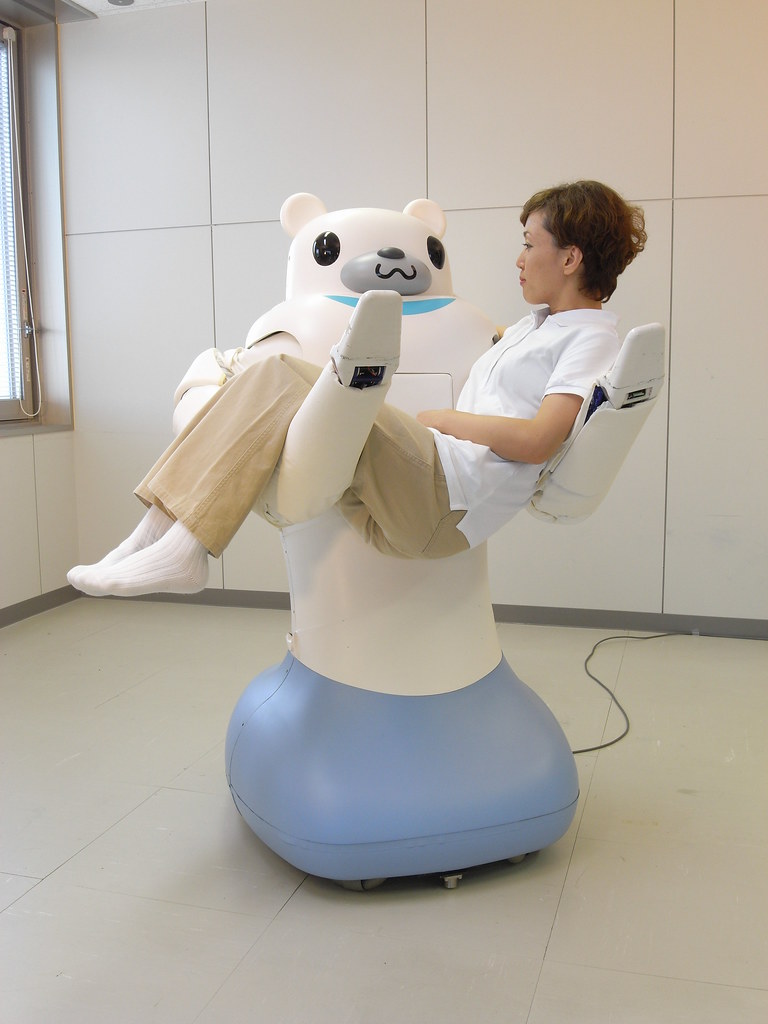Opportunities
Care-bots - RIBA
In recent decades, the medical sector has significantly advanced with the use of technology to support the increasing demand for medical assistance. Medical robots known as care-bots have been designed to aid senior citizens. These robots can assist with various needs and daily tasks such as lifting a person out of bed which can help to maintain their independence and improve their quality of life. A medical robot known as RIBA, takes the form of a giant white teddy bear and has been designed with specialised arms for lifting bedridden patients from their beds to a wheelchair and back. This gives existing care workers the opportunity to assist with other tasks. RIBA has cameras and microphones that are used to access its surroundings, and also has touch sensors inside its hands and shoulders to assist with lifting a patient. RIBA is designed to consider the comfort level of a patient using a flexible mechanical system with soft padding on its body. RIBA was designed with comfort control which is a relatively new innovation in robotics. Designers have implemented similar measures to those used in biomechanical car driver models, such as a questionnaire to determine the comfort level of the patient throughout the interaction process with RIBA.
